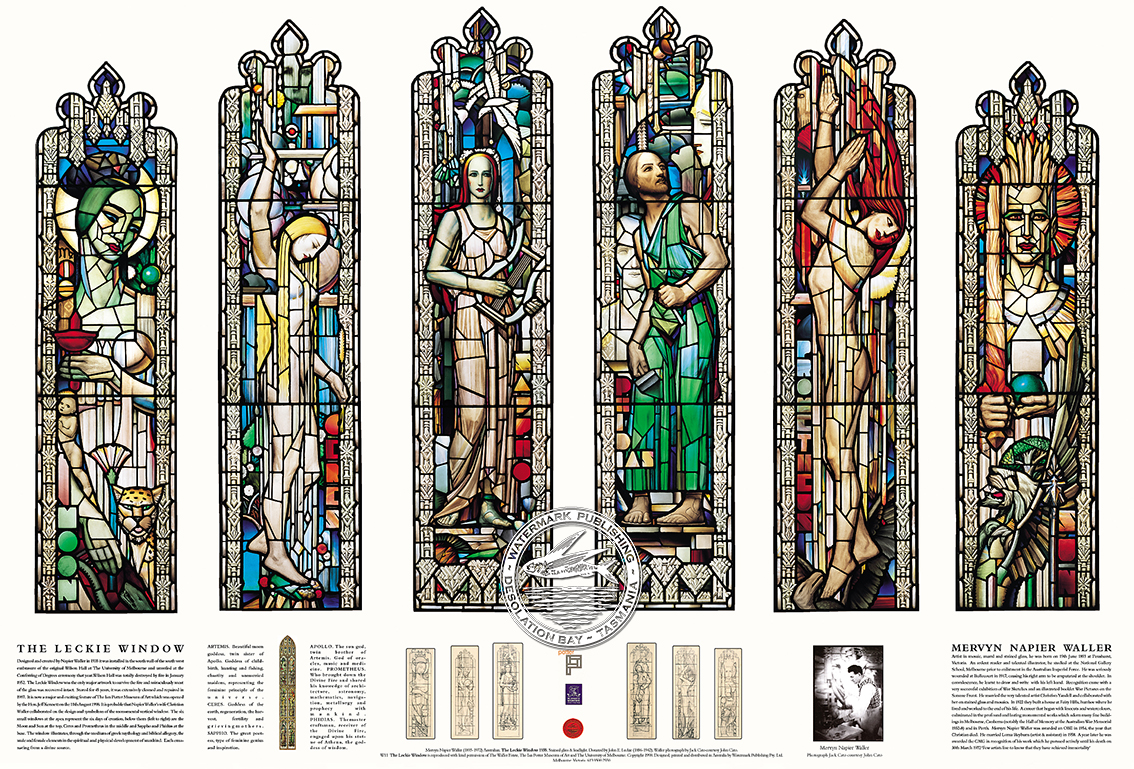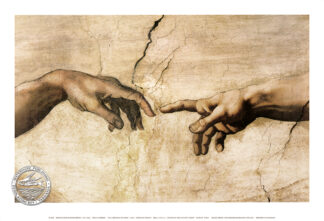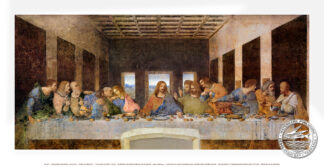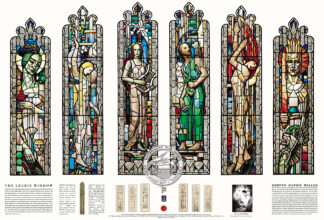Description
The artwork The Leckie Window (1935) – by Mervyn Napier Waller
The Leckie Window – Mervyn Napier Waller
The Leckie Window is a stained-glass artwork created in 1935 by Australian artist Mervyn Napier Waller. It is located in Wilson Hall at the University of Melbourne. Waller designed the window to honour Major General Sir John Leckie. It serves as a tribute to Leckie’s service, leadership, and dedication to education and public life.
The window features six tall panels, each named after a classical figure: Apollo, Artemis, Ceres, Phidias, Prometheus, and Sappho. These names come from ancient Greek and Roman mythology, literature, and history. Each figure represents a different human achievement—Apollo stands for music, Artemis for wisdom, Ceres for harvest, Phidias for art, Prometheus for sacrifice, and Sappho for poetry. Together, they symbolise the values of knowledge, creativity, strength, and the ongoing search for truth.
At the centre of the window, Waller placed a larger figure representing Knowledge, tying the themes of the six panels together. He used vivid colours, bold lines, and clear shapes to give the window energy and clarity. His inspiration came from older European art, particularly from the medieval and Renaissance periods, which is clearly reflected in the window’s style.
Mervyn Napier Waller (1893–1972) was a celebrated Australian artist. He became known for his large murals and stained-glass works. After losing his right arm in World War I, he taught himself to draw and paint with his left. Despite this challenge, he went on to complete many major public art projects.
In 1952, a fire destroyed the original Wilson Hall, damaging the Leckie Window and shattering many glass panels. Fortunately, Waller restored the window when the new hall opened in the 1950s. Today, it remains one of his finest works and a lasting symbol of learning, art, and honour at the University of Melbourne.








